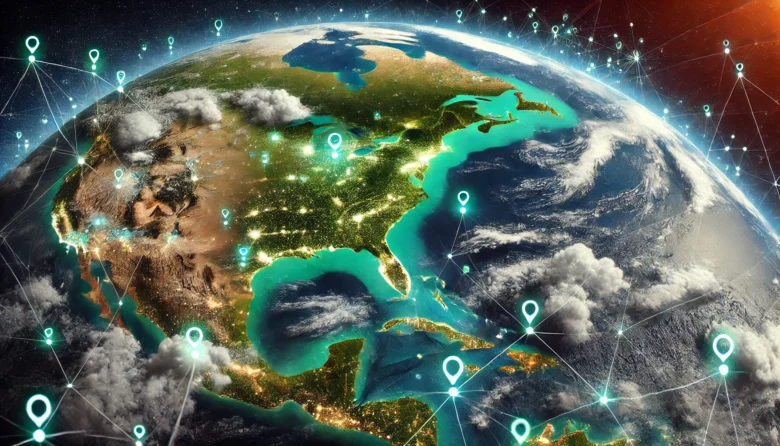Fun Fact: The world generates over 2.5 quintillion bytes of data every day, and much of this data can be harnessed to protect our environment!
In today’s world, environmental challenges like climate change, deforestation, and air pollution are escalating at an alarming pace. But here’s the silver lining: Big Data is proving to be a game-changer in environmental monitoring. From analyzing air quality to tracking endangered species, Big Data enables us to understand, predict, and respond to ecological issues like never before.
The Power of Big Data in Action
Big Data encompasses large volumes of both organized and disorganized data that can be processed to extract meaningful insights. Environmental monitoring, on the other hand, involves tracking and studying natural phenomena, such as temperature changes, pollution levels, and biodiversity patterns. When combined, they form a powerful duo capable of addressing critical environmental concerns. Let’s dive deeper to understand how this partnership works.
Real-Time Monitoring of Air and Water Quality
Imagine you’re living in a city struggling with air pollution. Wouldn’t it be helpful to know which areas are safe or unsafe to visit? Big Data makes this possible.
Case Study: Delhi’s Air Quality Monitoring
The Central Pollution Control Board (CPCB) of India uses sensors to collect data on particulate matter (PM 2.5 and PM 10), carbon monoxide (CO), and other pollutants. This information is processed using Big Data tools to generate real-time air quality indexes (AQIs). Citizens can access this data through apps and websites to plan their day accordingly.

Water quality is another critical area where Big Data shines. Sensors installed in rivers, lakes, and oceans measure parameters like pH, turbidity, and dissolved oxygen. This data helps authorities identify contamination sources and take timely corrective actions.
Predicting Natural Disasters
Big Data has revolutionized disaster prediction and management. By analyzing patterns in historical data, scientists can predict events like earthquakes, floods, and hurricanes with higher accuracy.
Example: Cyclone Fani Prediction in India
Before Cyclone Fani hit the eastern coast of India in 2019, meteorologists used Big Data analytics to track its path and intensity. This timely prediction allowed the government to evacuate over a million people, saving countless lives.
Wildlife Conservation and Biodiversity Monitoring
Tracking wildlife populations and their habitats is a Herculean task. However, Big Data simplifies it.
Anecdote: Saving African Elephants
Conservationists in Africa use GPS-enabled collars on elephants to collect movement data. Analyzing this data helps them understand migration patterns, detect poaching activities, and devise effective conservation strategies.
Additionally, technologies like drones and camera traps, combined with Big Data, allow researchers to monitor species diversity in remote regions.
Combating Climate Change
Climate change is one of the most significant challenges faced by humanity, and big data plays a crucial role in addressing it. By analyzing data from satellites, weather stations, and IoT (Internet of Things) devices, scientists can better understand global warming trends and their impacts.
Example: NASA’s Earth Observing System
NASA uses Big Data to monitor greenhouse gas levels, ice sheet melting, and rising sea levels. These insights are invaluable for policymakers to implement effective climate action plans.
Improving Agricultural Sustainability
Agriculture is both a victim and a contributor to environmental degradation. Big Data offers solutions to make farming more sustainable.
Case Study: Precision Farming in India
Companies like CropIn (a Bengaluru-based agri-tech firm) use Big Data to provide farmers with insights on crop health, soil conditions, and optimal irrigation schedules. This reduces resource wastage and increases yield.
Citizen Participation Through Crowdsourced Data
Big Data isn’t just for scientists; it empowers ordinary citizens too! Crowdsourcing platforms collect data from individuals to monitor environmental issues.
Example: iNaturalist
This application enables users to share pictures of flora and fauna, helping build an extensive worldwide database of biodiversity. Big Data tools analyze these contributions to track species distribution and identify endangered species.
Challenges and the Road Ahead
While Big Data offers immense potential, it also comes with challenges:
Data Overload: Managing and analyzing vast datasets requires robust infrastructure and skilled personnel.
Privacy Concerns: Collecting real-time data from devices raises questions about individual privacy.
Cost Barriers: High costs of sensors, servers, and software can deter widespread adoption.
Overcoming these hurdles requires collaboration between governments, tech companies, and the public.
Conclusion
Big Data is transforming the way we monitor and protect our environment. From predicting disasters to conserving wildlife and fighting climate change, its applications are limitless. However, to unlock its full potential, we must invest in technology, education, and collaboration.
As individuals, we can also contribute by using apps and platforms that support environmental monitoring and sharing valuable data. Together, we can harness the power of Big Data to create a sustainable future for generations to come.
Author’s Note
I believe technology holds the key to solving some of our most pressing environmental issues. Let’s embrace innovations like Big Data and work towards a cleaner, greener planet.
G.C., Ecosociosphere contributor.




